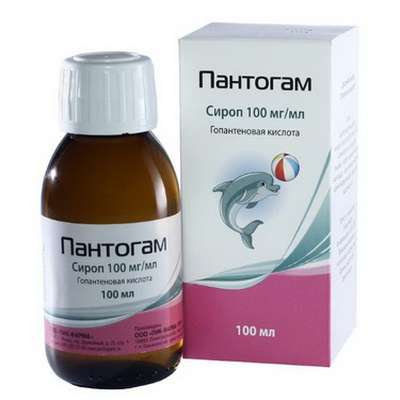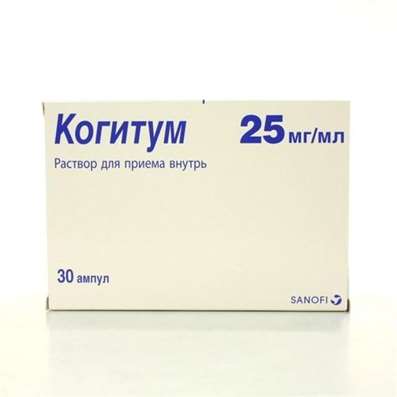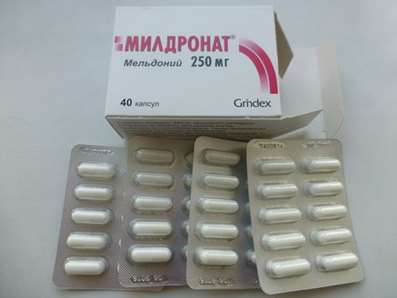Instruction for use: Buserelin (Buserelinum)
I want this, give me price
chemical name
6- [0- (1,1-Dimethylethyl) -D-serine] -9- (N-ethyl-L-prolinamide) -10-deglycinamide releasing factor LH (porcine) (and as acetate)
Pharmacological group
Hormones of the hypothalamus, pituitary gland, gonadotropins and their antagonists
Antineoplastic hormonal agents and hormone antagonists
Nosological classification (ICD-10)
C50 Malignant neoplasm of breast
Cancer of the nipple and areola of the breast, Breast carcinoma, The hormone-dependent form of recurrent breast cancer in women in menopause, Hormone-dependent breast cancer, Disseminated breast carcinoma, Disseminated Breast Cancer, Malignant breast cancer, Malignant neoplasm of breast, Contralateral breast cancer, Locally advanced or metastatic breast cancer,Locally-distributed breast cancer, Locally-recurring breast cancer, Metastatic breast carcinoma, Metastasis of breast tumors, Metastatic breast carcinoma, Inoperable breast carcinoma, Incompatible breast cancer, Breast cancer in women with metastases, Breast cancer in men with metastases, Breast Cancer, Breast cancer in men, Mammary cancer, Breast cancer with distant metastases, Breast cancer in postmenopausal women, Breast cancer hormone-dependent, Breast cancer with local metastases, Breast cancer with metastases, Breast cancer with regional metastases,Breast cancer with metastases, Common hormone-dependent forms of breast cancer, Common Breast Cancer, Recurrent Breast Cancer, Recurrence of breast tumors, Breast cancer, Estrogen-dependent breast cancer, Estrogen-Dependent Breast Cancer, Disseminated breast cancer with overexpression of HER2, Tumors of the mammary glands
C61 Malignant neoplasm of prostate
Adenocarcinoma of the prostate, Hormone-dependent prostate cancer, Hormone-Resistant Prostate Cancer, Malignant tumor of prostate, Malignant neoplasm of prostate, Carcinoma of the prostate, Locally-distributed non-metastatic prostate cancer, Locally advanced prostate cancer, Locally spread prostate cancer, Metastatic prostatic carcinoma, Metastatic prostate cancer, Metastatic hormone-resistant prostate cancer, Non-metastatic prostate cancer, Incompatible prostate cancer, Prostate Cancer, Prostate cancer, Common prostate cancer, Testosterone-Depot Prostate Cancer
D26 Other benign neoplasms of the uterus
Fibromyoma of the uterus, Myoma, Uterine fibroids, Fibromyoma, Myoma of the uterus, Fibrrios, Meigs syndrome, Tumors of the uterus
E28 Ovarian dysfunction
Dysfunction of the sex glands, Abnormal ovarian function, Non-functioning ovaries, Primary dysfunction of the ovaries, Decreased function of the sex glands, Estrogen insufficiency
N80 Endometriosis
Endometrioid endometriosis
N85.0 Endometrial glandular hyperplasia
Hyperplastic processes of the endometrium, Cystic glandular hyperplasia of the endometrium
N85.1 Adenomatous endometrial hyperplasia
N97.0 Female infertility associated with lack of ovulation
Anovulation, Stimulation of ovulation, Stimulation of a single dominant follicle, Stimulation of the growth of multiple follicles, Anovulatory dysfunction of the ovaries, Anovulatory cycle, Induction of ovulation in the treatment of infertility, Infringement of an ovulation, Anovulatory infertility, Infertility due to anovulation or inadequate maturation of the follicle, The hormone-dependent pathology of the reproductive system, Anovulation chronic, Anovulatory cycles, Infertility associated with anovulation, Incomplete maturation of the follicle
Code CAS 57982-77-1
Characteristics
Synthetic analogue of gonadotropin-releasing hormone.
Pharmacology
Pharmacological action - antiandrogenic, antitumor, antigonadotropic, antiestrogenic.
Competitively binds to receptors for gonadotropin-releasing hormone cells in the anterior lobe of the pituitary gland. With the initial or intermittent injection Buserelin stimulates the release of gonadotropins (LH and FSH) by the pituitary gland, which in turn causes a short-term increase in the level of sex hormones in the blood plasma. Continuous use leads to blockade of the gonadotropic function of the pituitary gland and stops the release of LH and FSH (an average of 12-14 days). As a result, there is a suppression of the synthesis of sex hormones in the ovaries and a decrease in the concentration of estradiol in the blood to post-menopausal values. Long-term daily use of Buselelin in the treatment of prostate cancer leads to a decrease in the concentration of testosterone to the content typical for the state after orchiectomy, i.e. To "drug castration." After the abolition of Buserelin, the content in the blood of testosterone and estrogens is gradually restored.
Preoperative treatment with endometriosis reduces inflammatory phenomena, the size of pathological foci and their blood supply. As a result of postoperative therapy, the frequency of relapses and the severity of the adhesion process are reduced.
It is well absorbed from the mucous membrane of the nose and after a / c injection. Cmax with the / m introduction of 3.75 mg is (0.32 ± 0.12) ng / ml, bioavailability when administered once a month - 53%. In small amounts excreted in breast milk.
In in vitro studies using bacterial systems (Ames test with Salmonella typhimurium and Escherichia coli) and mammalian cell systems (micronucleus test in mice), no mutagenic effect was detected. In two-year studies in rats with daily administration in doses of 0.2-1.8 μg / kg, signs of carcinogenicity were not revealed. Suppression of testosterone secretion leads to impaired fertility. It is not known whether fertility is restored after the repeal of Buserelin (after the cancellation of its analogs it is restored).
Indications
Hormone-dependent prostate cancer of stage III and IV (if necessary, inhibiting testosterone production in testes); Breast cancer in women with a preserved menstrual cycle and the presence of estradiol / progesterone receptors; Hormone-dependent pathology of the reproductive system caused by absolute or relative hyperestrogenia (endometriosis, including pre- and postoperative periods, uterine myoma, hyperplastic endometrial processes); For the induction of ovulation in the treatment of infertility (in combination with gonadotropins) in in vitro fertilization (IVF) programs.
Contraindications
Hypersensitivity.
Restrictions on the use
Obstruction of the urinary tract in the anamnesis, metastases to the spine - due to the risk of squeezing the spinal cord as a result of an exacerbation of the disease (prostate cancer) at the beginning of treatment.
pregnancy and lactation
Contraindicated in pregnancy. For the duration of treatment should abandon breastfeeding.
Side effects
From the nervous system and sensory organs: headache (with intranasal administration), mood lability, sleep disturbance, depression, eye irritation symptoms (when wearing contact lenses).
On the part of the digestive system: a change in appetite, nausea, vomiting.
On the part of the genitourinary system: a decrease in libido, impotence, vaginal dryness, ovarian cysts, lower abdominal pain, menstrual bleeding.
Allergic reactions: urticaria, skin hyperemia, angioedema.
Other: hot flashes, irritation of the nasal mucosa and nosebleeds (with intranasal administration), increased sweating (with intranasal administration), acne, dry skin and mucous membranes, demineralization of bones, gynecomastia, thrombosis, swelling of the feet and ankles; Symptoms associated with increased testosterone levels in the blood at the beginning of therapy (bone pain, numbness or tingling in the hands or feet, difficulty urinating, weakness in the legs).
Interaction
Simultaneous use with other drugs containing sex hormones (including gonadotropins - with the induction of ovulation), can contribute to the emergence of the syndrome of ovarian hyperstimulation. Reduces the effect of hypoglycemic agents.
Routes of administration
In / m, sc, intranasal.
Precautions of substance Bucerelin
Before the start of therapy, pregnancy should be excluded and oral contraceptives should be stopped, barrier methods of contraception (condoms) should be used during the first 2 months of endometriosis, endometrial hyperplasia and uterine myoma.
With intranasal application on the background of rhinitis before the introduction, it is necessary to clean the nasal passages; Should avoid the use of vasoconstrictive intranasal drugs before and within 30 minutes after the injection of buserelin.
Use with caution in patients with depression.
For the induction of ovulation can be prescribed only by a doctor who has experience in the treatment of infertility.
With caution apply during work drivers of vehicles and people whose activities are associated with increased concentration of attention.
special instructions
To treat prostate cancer should not be prescribed to patients after an orchiectomy. At the beginning of prostate cancer treatment, an exacerbation of the disease (usually less than 10 days) associated with the initial transient increase in androgen concentration in the blood ("flash phenomenon") is possible. In this case, severe pain in the bones or in the site of tumor localization, exacerbation of symptoms (including dysuria) is possible. The intensification of neurological disorders in patients with metastases in the spine can lead to temporary weakness and paresthesia in the lower extremities. It is necessary to warn the patient about the need to continue therapy, despite the side effects, which in the course of further treatment decrease or disappear.

 Cart
Cart





